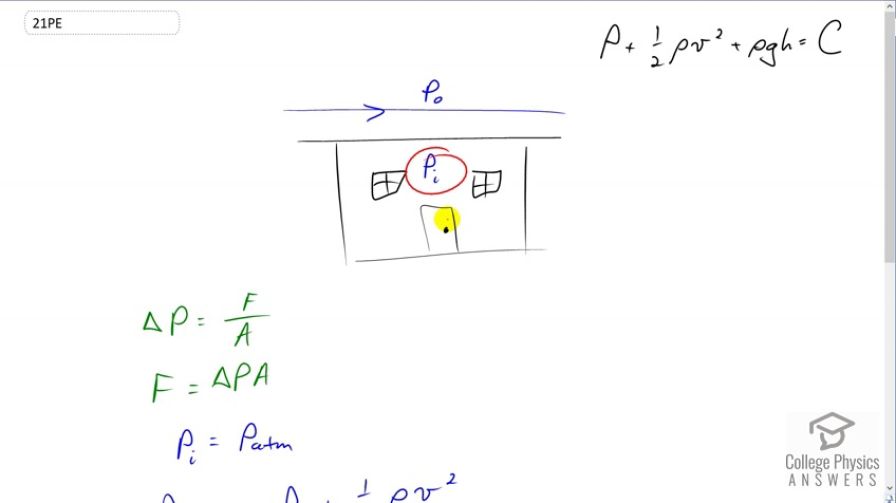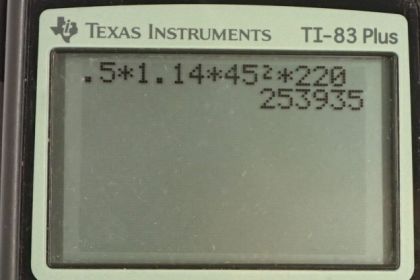Question
Every few years, winds in Boulder, Colorado, attain sustained speeds of 45.0 m/s (about 100 mi/h) when the jet stream descends during early spring. Approximately what is the force due to the Bernoulli effect on a roof having an area of ? Typical air density in Boulder is , and the corresponding atmospheric pressure is . (Bernoulli's principle as stated in the text
assumes laminar flow. Using the principle here produces only an approximate result, because there is significant turbulence.)
Final Answer
Solution video
OpenStax College Physics for AP® Courses, Chapter 12, Problem 21 (Problems & Exercises)

vote with a rating of
votes with an average rating of
.
Calculator Screenshots
Video Transcript
This is College Physics Answers with Shaun Dychko. So in Colorado we have this air moving quickly over the roof of this house and the pressure inside was going to higher because the air inside the house is not moving at all. And so, when we're looking at the Bernoulli Equation here, there's no one half rho V squared term inside the house. And since, this height difference is very very small we're going to ignore the effect of this rho gh term, as well. So the force on this roof is going to be a result of the pressure difference between the inside and the outside. And so that pressure difference is going to be the force divided by the area and we'll solve for the force by multiplying both sides by A. And so we have force is the difference in pressure times area. The pressure inside is atmospheric pressure as I mentioned and that's the only term in the Bernoulli's Equation inside the house. And so, that's why this term is by itself. Then outside the house we have the pressure outside plus one half times the density of air times the speed of the air squared. And if we subtract Po from both sides, we got the difference in pressure, atmospheric pressure minus pressure outside is equal to this one half density of air times its air speed squared. And so this is we substitute in for delta P in our formula for the force. So the force is going to be one half rho V squared times area. So that's one half times 1.14 kilograms per cubic meter density times 45 meters per second squared times 220 square meters giving us 2.54 times ten to the five newtons will be the force on the roof and that will be a force upwards.
